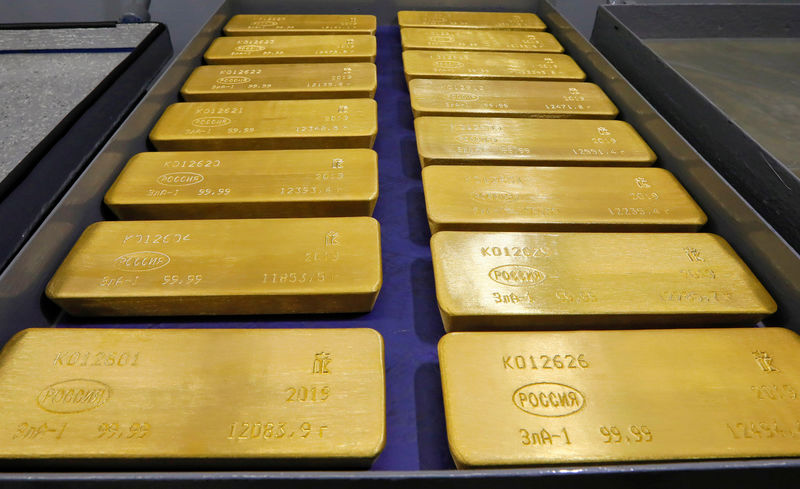Investing.com -- Gold prices hovered around $1,500 a troy ounce in early trading in New York on Wednesday, as disappointing news on the trade front and a recovery in global bond yields kept buyers sidelined.
By 10:25 AM ET, gold futures for delivery on the Comex exchange were at $1,500.85 a troy ounce, up 0.1% on the day, while spot gold prices were up 0.6% at 1,494.24.
Silver futures were flat at $18.18 an ounce, while platinum futures were the best performing haven metal, gaining 1.0% to $946.30 an ounce.
In the absence of dramatic macro news, buyers were content to sit on their hands ahead of the European Central Bank’s policy meeting on Thursday.
The ECB is widely expected to rejoin the global trend of monetary policy easing, although traders have pared their bets in recent days after several top ECB officials voiced concern about resuming large-scale bond purchases, while others have fretted that an aggressive move now would tie the hands of incoming President Christine Lagarde.
Lagarde is due to succeed Mario Draghi as president in November.
Against that backdrop, German 10-year government yields have rebounded to -0.55% from a record low of -0.74% last month, while the U.S. 10-year Treasury note hit a four-week high of 1.75% earlier Wednesday. U.K. gilt yields have also risen as the risk of a disorderly Brexit at the end of October has receded, while the confirmation of a new Italian government has also pre-empted another big political risk that had weighed on investors’ minds during the summer.
All those developments tend to hurt gold, which offers no nominal return.
The ECB’s meeting will be a warm-up to the Federal Reserve’s own policy meeting next week, where traders expect another 25 basis point cut to the target range for Fed funds. Fresh pressure from President Donald Trump, who tweeted earlier Wednesday that “boneheads” at the Fed should cut to “ZERO, or below”, had little impact on prices.
Last week, it had been the turn of both China and Russia to ease monetary policy, the latter cutting its key rate to a five-year low of 7.00%, and the former cutting reserve requirements for banks.
Holger Schmieding, chief economist at Berenberg Bank in Berlin, said in a recent note he expects the ECB to cut to its deposit rate by 20 basis points to -0.6%, to resume bond purchases at a level of 30 billion euros ($34 billion) a month for a year and to rule out any rise in interest rates until at least the second half of next year. He also expects measure to alleviate the pain of negative interest rates for the banking sector, which is struggling to earn profits and strengthen its collective balance sheet in the negative interest rate environment.
